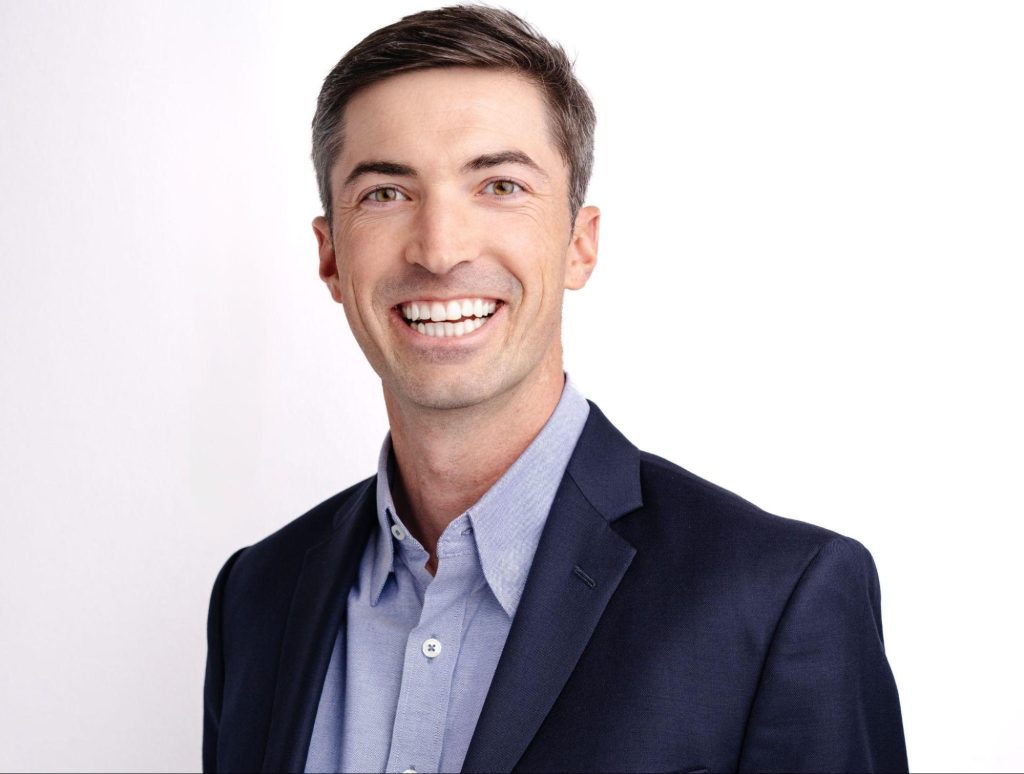Levi Pettit, CFA, CFP, has built Dornick Wealth Management around a core principle that guides every investment decision: avoiding the costly mistakes that emotional reactions can create.
The managing partner of the boutique wealth management firm, who holds an MBA from Pepperdine Graziadio Business School and previously managed portfolios at a single-family office, has witnessed firsthand how market anxiety and knee-jerk reactions can derail carefully constructed financial plans.
Pettit emphasizes that his firm’s guiding principles focus on preventing emotional decision-making that can harm long-term wealth building. His systematic approach aims to shield clients from the costly mistakes that often accompany market turbulence.
The Notification Problem
Modern investors face a constant barrage of market updates, economic headlines, and push notifications designed to capture attention rather than inform rational decision-making. Pettit argues that this information overload creates dangerous conditions for emotional investing.
“We walk around with notification devices in our pockets and pretty much know what’s happening at all times during the day,” he observes. “A lot of the news that’s out there today is meant to strike fear.”
Recent market history provides compelling evidence for Pettit’s concerns. April 2025 exemplified how headlines can mislead investors about actual market performance. Despite negative news dominating financial media throughout the month, the S&P 500 finished April relatively flat.
“Obviously April was a crazy month, but if you just look at April and you stay put, the month ended nearly flat with gains extending into May, and you would never have guessed that if you were only reading the negative headlines,” Pettit notes. “When we talk about avoiding those emotional decisions, that’s what we’re trying to avoid — because if you try to time the market and get out based off a negative headline, you’re likely to miss the upswing.”
Historical data support the wealth management industry’s long-standing advice about market timing. Investors who attempt to jump in and out of markets based on news cycles or gut feelings consistently underperform those who maintain disciplined, long-term positions.
Common Emotional Traps
Pettit has identified several emotional investment pitfalls that frequently impact even sophisticated investors. Professional familiarity often breeds false confidence, leading to dangerous concentration risks.
Consider a real estate professional who feels comfortable overweighting real estate investments because of industry expertise. While knowledge provides certain advantages, Pettit points out a critical flaw in this reasoning: the professional’s employment income already depends on the same sector.
“They may have an advantage in that industry because of their professional expertise,” he explains. “However, that’s where their employment income comes from, so we need to be smart about the strategies that we put in place.”
Stock options present another emotional challenge. Employees who help build startups from the ground up often develop strong emotional attachments to company shares, holding positions far longer than prudent diversification would suggest.
Family legacy assets create perhaps the most complex emotional investment scenarios. Inherited positions carry sentimental value that can cloud financial judgment, leading families to maintain concentrated positions that increase overall portfolio risk.
“There’s an emotional attachment to it,” Pettit acknowledges. “It’s a legacy asset. I’m not saying that those are bad or that they should be avoided, but it’s very important to have conversations around the concentration risk that legacy assets can create.”
Systematic Solutions
Dornick addresses emotional investing through systematic processes designed to remove impulse from investment decisions. Rather than reacting to market movements or headlines, the firm builds customized strategies aligned with each client’s specific financial objectives.
The approach begins with comprehensive risk assessment tools that go beyond simple questionnaires. Pettit employs detailed risk tolerance evaluations that incorporate actual dollar amounts rather than abstract concepts, helping clients understand their true comfort levels with potential losses.
“It’s one thing to fill out a suitability form and say, ‘I am comfortable with risk,’ but in reality the thought of a market downturn makes your stomach drop,” Pettit explains. “That’s why it is important for us to determine an appropriate risk tolerance. We then match it with an investment strategy that not only aligns with your risk tolerance, but also your long term goals.”
Regular communication serves as another systematic safeguard against emotional decisions. During volatile periods, Dornick sends monthly check-ins asking clients about their comfort levels with current market conditions and their confidence in existing financial plans.
These proactive communications allow the firm to address concerns before they become costly emotional reactions. Rather than waiting for clients to panic and request changes, Pettit’s team maintains ongoing dialogue about portfolio performance and market conditions.
Disciplined Implementation
Dornick’s systematic approach extends to portfolio construction and ongoing management. Once investment strategies are established based on individual goals and risk tolerance, the firm maintains discipline regardless of short-term market movements or economic headlines.
“Whatever customized plan we give you, there’s a system that we have in place that allows us to stay the course in times of volatility,” Pettit states.
This systematic discipline benefits clients in multiple ways beyond simple return optimization. Market monitoring and investment decision-making consume significant time and mental energy for individual investors, resources that many busy professionals prefer to allocate elsewhere.
Pettit recognizes that his clients, often business owners, executives, and other high-achieving professionals, have limited bandwidth for constant portfolio oversight. Removing this responsibility allows them to focus on their primary sources of income and family priorities.
Risk Education and Management
Education plays a central role in Dornick’s systematic approach. Many clients discover they can handle more risk than initially believed, potentially unlocking higher returns aligned with their long-term goals. Others learn that their stated risk tolerance exceeds their actual comfort levels during market stress.
Risk tolerance can change over time, influenced by life circumstances, market experiences, and shifting priorities. Dornick’s systematic check-ins account for these changes, allowing for portfolio adjustments when appropriate rather than reactive changes during crisis periods.
“Risk tolerance and capacity change,” Pettit notes. “It’s important that we not only get a sense of where they stand in the beginning of the relationship, but also check in.”
Long-Term Focus
Pettit’s background as a CFA charterholder and his experience managing family office investments inform his conviction about systematic, long-term investing approaches. His academic and professional experience emphasized the mathematical advantages of compound growth and the costs of attempting to time markets.
The wealth management industry has accumulated decades of data demonstrating that disciplined, systematic investing typically produces superior outcomes compared to emotional, reactive approaches. Dornick’s systematic processes aim to help clients capture these advantages while avoiding the psychological traps that derail many investment plans.
Market volatility will continue to challenge investors’ emotional discipline. Pettit believes systematic approaches, combined with ongoing professional guidance, provide the best framework for building wealth despite inevitable periods of uncertainty and fear.
“Our goal is to create peace of mind,” he states. “We want peace of mind that the plan that we’ve put in place is going to work for them, and we want peace of mind in times of volatility.”













